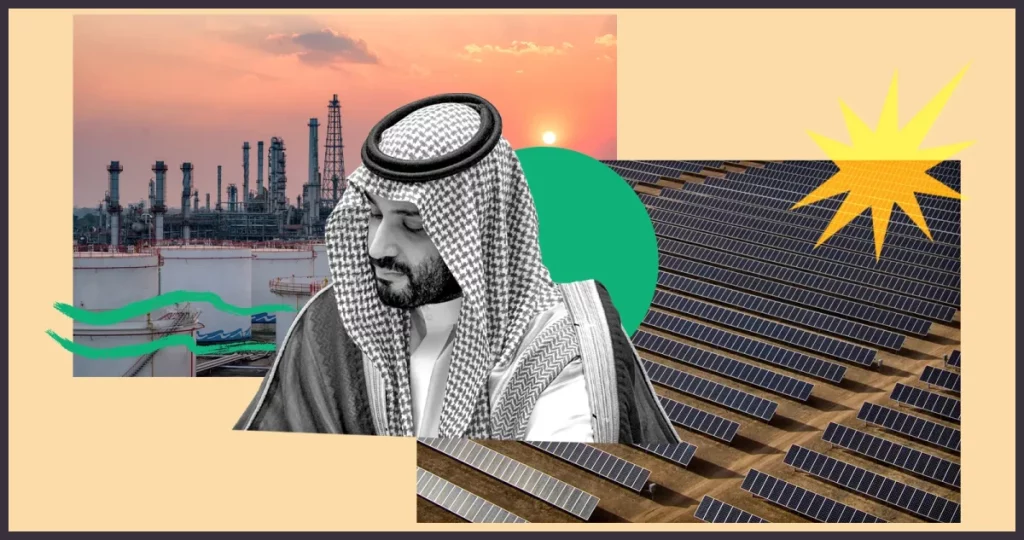Saudi Arabia- a region that barely existed as a nation before the discovery of oil. Saudi Arabia appears to be the nation most significantly impacted by the shift away from fossil fuels.
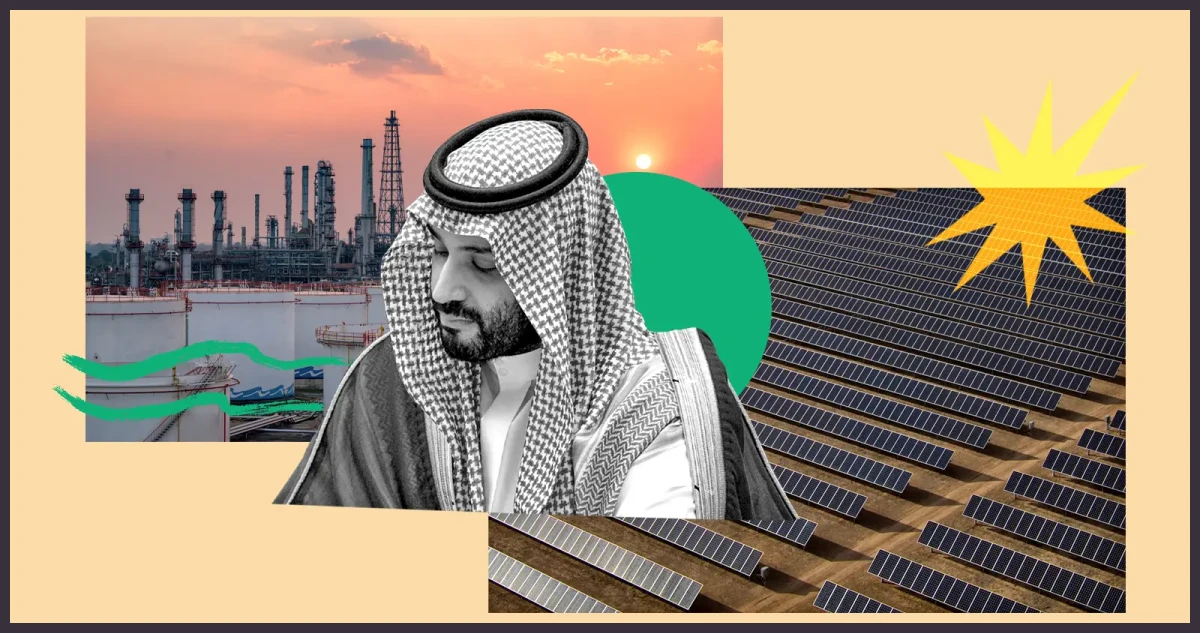
This fact leads to a million-dollar question- Can Saudi Arabia survive without oil? You must be wondering too…
So, let’s delve into the detailed breakdown of the same.
Keep reading!
(A) Oil in Saudi Arabia: A Vital Global Resource
Saudi Arabia, a nation synonymous with vast deserts and towering sand dunes, holds a unique position in the global energy landscape. All thanks to its huge oil reserves. The significance of oil in Saudi Arabia extends far beyond its borders, shaping economies, geopolitics, and daily life worldwide.
Let’s look at the significance of oil in Saudi Arabia-
(A.1) Petroleum Dominance in Fiscal Landscape
Saudi Arabia heavily relies on its petroleum division, contributing a staggering 87% to the national budget, 90% to export revenues, and 42% to the GDP. This unparalleled dependence shapes the financial narrative of the desert kingdom. The state-owned giant, Saudi Aramco, manages the majority of the nation’s oil assets and production, shaping both the domestic and global landscapes.
(A.2) Oil Reserves and Export Dominance: Fuelling the Kingdom’s Economy
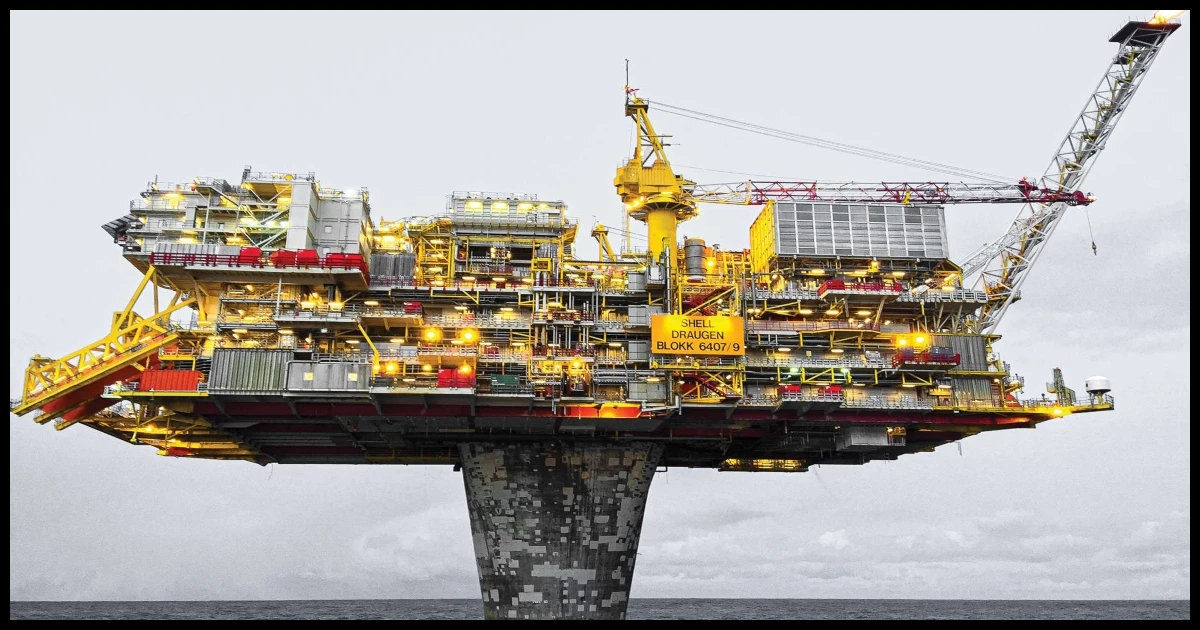
Saudi Arabia proudly boasts about 20% of the world’s proven oil reserves, underground reservoirs that have been the lifeblood of the nation’s economy for decades. As the largest exporter of crude oil, Saudi Arabia plays a pivotal role in meeting global energy demands, with Saudi Aramco contributing a staggering 10% to the world’s daily oil production.
(A.3) Economic Backbone: Oil’s Central Role
The Saudi Arabian economy is deeply intertwined with oil production and export, with oil contributing around 50% to the country’s GDP. Over 90% of Saudi Arabia’s total exports come from oil, making it not just a sector but a lifeline for economic stability and growth.
(A.4) Global Energy Transition: Navigating the Change
As the world embarks on a gradual shift away from hydrocarbon fuels toward cleaner alternatives, Saudi Arabia’s unique position as an oil giant becomes crucial. Despite the growing interest in renewables, 80% of global energy still relies on hydrocarbons, with oil accounting for 30%.
In developing economies like India and China, oil demand continues to rise, while the transition to electric vehicles is just beginning in many parts of the world. Hydrocarbons remain the backbone of the petrochemical industry, producing everything from plastics to pharmaceuticals.
(A.5) Saudi Arabia’s Role in a Changing World
In essence, Saudi Arabia’s oil wealth is not confined within its borders but ripples across the globe, influencing energy markets, economic stability, and environmental discussions. As the world navigates the energy transition, Saudi Arabia’s role remains pivotal, ensuring a delicate balance between tradition and transformation in the ever-evolving global energy landscape.
(B) How Oil Discovery Changed Saudi’s Fate?
Before delving into the details of- Can Saudi Arabia survive without oil? We need to understand how the oil discovery changed Saudi’s fate…
Why so? You may ask.
See, in this section, we will look at the advantages that Saudi received after the oil discovery. If the oil reserves end up, all the advantages will disappear too! Therefore, we will get an idea of what to do to retain those advantages without depending on oil reserves.
So, let’s see how the discovery of oil was a boon for Saudi Arabia-
| Events | Description |
| Unification to Oil Riches | 1933 oil concession with Standard Oil Co. propels Saudi Arabia from disunity to an oil-rich nation. |
| Oil Money and Tribal Unity | Oil revenues consolidate Ibn Saud’s rule, fostering tribal unity and shaping the modern welfare state. |
| Legacy of the Concession | The oil concession legitimizes Ibn Saud’s rule, making a Saudi state without oil inconceivable. |
| Diversification Efforts | Despite attempts, oil and government spending still dominate Saudi Arabia’s GDP, posing challenges. |
| Unlocking Hidden Wealth | Untapped natural assets (phosphates, copper, gold) and abundant solar potential offer economic potential. |
| Lessons for Oil-Dependent Nations | Saudi Arabia’s journey highlights the possibility of resilience by embracing diverse natural resources. |
Now, let’s dive into the details-
(B.1) From Unification to Oil Riches: Ibn Saud’s Game-Changing Move
In the early 20th century, Saudi Arabia was a fragmented land, lacking a unified identity for a millennium. The defining moment occurred in 1933 when Ibn Saud, the visionary monarch, secured an oil concession with Standard Oil Co. of California.
This move, a mere few months after being proclaimed king, marked a transformative step towards nationhood, shifting the trajectory of Saudi Arabia from disunity to a pivotal player in the global oil landscape.
(B.2) Oil Money and Tribal Unity: Ibn Saud’s Masterstroke
The significance of the oil concession went beyond economic gains. It became a strategic tool for Ibn Saud to consolidate power by fostering tribal unity. Through the judicious distribution of patronage among the peninsula’s tribal groups, he not only secured loyalty but also laid the foundation for the modern cradle-to-grave welfare state. Historian Ellen Wald emphasizes how this sense of noblesse oblige continues to shape Saudi Arabia today.
(B.3) The Concession’s Legacy: Oil as the Pillar of Saudi Identity
The oil concession wasn’t just an economic transaction; it was a legitimizing force. It solidified Ibn Saud’s position as the ruler of Saudi Arabia. As we examine the historical context, it becomes clear that oil is not just a resource for the nation; it’s an integral part of its identity, serving as the cornerstone that upholds the kingdom.
(B.4) Diversification Efforts: A Complex Dance with Crude
Despite ongoing efforts over five years to diversify the economy away from crude, Saudi Arabia remains heavily dependent on oil. Oil and government spending, largely fueled by petroleum, still account for around two-thirds of the country’s GDP. This underscores the challenge of breaking free from oil’s economic stronghold and the complexity of transitioning to a more diversified economic landscape.
(B.5) Beyond Petro-Dependency: Unlocking Saudi Arabia’s Hidden Wealth
Looking beyond hydrocarbons, Saudi Arabia possesses untapped natural resources like phosphates, copper, and gold. These resources, overshadowed by the dominance of crude oil, hold the potential for diversification and economic growth.
Additionally, the kingdom’s significant solar potential positions it as a key player in the emerging green-hydrogen sector, providing a glimpse of a future less reliant on traditional oil.
(B.6) Lessons for Oil-Dependent Nations: A Future Beyond Fossil Fuels
Saudi Arabia’s journey offers valuable insights for other oil-dependent nations facing an uncertain future. The narrative suggests that the end of the oil era doesn’t necessarily equate to the end of prosperity.
Embracing and harnessing diverse natural resources can be a pathway to resilience and sustainability, serving as a beacon of hope for countries navigating the challenging transition away from fossil fuels.
(C) The Finite Lifespan: How Much Time Will Saudi Oil Last?
In the heart of the desert, Saudi Arabia grapples with the diminishing reserves of its black gold, setting the stage for a critical juncture. Let’s unravel the intricacies of this delicate balancing act between abundance and scarcity, and its far-reaching implications.
| Finite Lifespan of Saudi Oil | Details |
| Proven Reserves and Consumption | Saudi Arabia boasts an impressive 102 billion barrels in proven oil reserves, a vast underground treasure that has fueled the nation’s prosperity over the years. Yet, questions arise as the current production rate hovers around 10.8 million barrels per day, prompting concerns about the sustainability of this crucial resource. |
| The 26-Year Countdown | A stark reality emerges, if Saudi Arabia halted the discovery of new oil fields today and maintained its current production, it would only have approximately 26 years before the reserves deplete. This countdown serves as a poignant reminder that even seemingly boundless resources have an expiration date. |
| Economic Dependence and Debt | The oil and gas sector is a cornerstone, contributing up to 50% of Saudi Arabia’s GDP and 70% of its export earnings. Plummeting Brent Crude prices, dropping below $20 per barrel, raise critical questions about the kingdom’s economic resilience, potentially pushing it into the realm of becoming a debtor nation. |
| Missteps and Geopolitical Risks | A pivotal moment unfolds as Saudi Crown Prince Mohammed bin Salman (MBS) miscalculates during a stormy call with Russian President Vladimir Putin, triggering a destructive price war. MBS’s once-confident statecraft reveals vulnerability, with the collapse of oil revenues jeopardizing both his power of patronage and regional stability. |
| The Energy Transition Dilemma | As the global shift towards cleaner energy gains momentum, Saudi Arabia grapples with its heavy reliance on hydrocarbons. Navigating the delicate balance between tradition and transformation, the kingdom faces the imperative to diversify its economy and invest in renewables. |
| Global Implications | Beyond the desert borders, the world watches intently as Saudi Arabia’s fate intertwines with geopolitics, energy markets, and climate goals. This pivotal moment resonates globally, marking an intersection of political, economic, and environmental considerations. |
Thus, Saudi Arabia’s oil reserves, once seemingly boundless, now face a finite horizon. The ticking clock urges adaptation, innovation, and a sustainable path forward as the kingdom charts its course through the shifting sands of time.
(D) What would a net zero oil Saudi Arabia look like?
So far we have seen that Saudi Arabia, renowned for its oil wealth, faces the daunting challenge of transitioning to a net-zero future. This transformation, though inevitable, comes with complexities and uncertainties.
Let’s dissect the potential scenarios and the strategic considerations for Saudi Arabia as it envisions a future beyond fossil fuels. Here’s what a net zero oil Saudi Arabia will look like-
(D.1) Post-2050 Petroleum Landscape
Even with a rapid energy transition, petroleum consumption may persist until at least 2050. A report from the Intergovernmental Panel on Climate Change suggests that, at current usage levels, Saudi Arabia’s oil reserves could last around 221 years.
The production cost advantage, with a record-low of $2.80 per barrel, positions the kingdom as one of the last oil producers in the game.
(D.2) Non-Energy Uses of Oil
Approximately 10% of global petroleum production, nearly 10 million barrels per day, is dedicated to non-burned products such as plastics, asphalt, lubricants, chemicals, and fertilizers.
Unlike burned fuels, non-burned products retain carbon atoms in their chemical matrixes, posing challenges for replacement with non-fossil alternatives.
(D.3) Carbon Capture and Storage (CCS)
The potential role of Saudi Arabia in carbon capture and storage emerges as a prospect. While CCS faces challenges, especially in commercial viability, it could breathe new life into the kingdom’s oil fields.
Enhanced oil recovery, injecting gas into old wells, is a tangible application of CCS, with one of the largest sites operating in Saudi Arabia’s Ghawar field.
(D.4) Solar Power Potential
Saudi Arabia’s vast solar potential positions it as a key player in renewable energy. Despite challenges, plans are in place to generate 50% of the country’s grid power from renewable sources by 2030.
The Arabian Peninsula’s sunlight intensity provides a unique advantage, offering opportunities for solar energy generation.
(D.5) Hydrogen: The Future Fuel
Hydrogen emerges as a potential substitute for oil, particularly in the form of green hydrogen produced with renewable power.
Saudi Arabia aspires to become the largest exporter of hydrogen, capitalizing on its abundant sunlight and aiming to play a pivotal role in the evolving energy landscape.
(D.6) Challenges of Economic Diversification
Diversifying the economy beyond oil presents challenges. Saudi Arabia’s unique advantages in the oil industry pose difficulties in replicating success in other sectors.
The monarchy’s reliance on oil revenues, constituting a significant portion of government revenues, raises concerns about potential constitutional and economic shifts.
(D.7) Socio-Political Implications
Oil has not only fueled the economy but has been central to the political and social fabric of Saudi Arabia. A 44% shortfall in government revenues is anticipated before oil production falls to zero.
The prospect of economic diversification could alter the relationship between the rulers and the people, potentially leading to significant political changes.
(D.8) Necessity of Transition
Whether the world succeeds in reducing carbon emissions or not, Saudi Arabia must act to survive and thrive in the coming decades.
The transition may not be easy, but it is an inevitable journey for the kingdom. As Andrew Grant from Carbon Tracker notes, “It’s a matter of when, rather than if.”
In short, the path to a net-zero Saudi Arabia is multifaceted, involving intricate economic, technological, and socio-political considerations. The kingdom stands at a crossroads, compelled to navigate a future that extends beyond its oil-centric identity, presenting both challenges and opportunities for sustainable growth.
(E) Vision 2030: Expansion of Saudi Arabia’s Economy away from Oil
Initiated in 2016, Saudi Arabia’s Vision 2030 aims to transform and diversify the nation’s economy by implementing various social and economic reforms. Here are key milestones in this ambitious timeline-
| Year | Key Developments |
| 2016 | The law allows foreign businessmen to buy debt instruments, the Saudization policy is implemented, and a tax on undeveloped lands is introduced. |
| 2017 | Future Investment Initiative pledges cultural reforms, 100% tax on tobacco, end of cinema ban, and launch of $500 billion city Neom. |
| 2018 | Introduction of 5% VAT, 127% petrol price increase, and lifting of the ban on women driving. |
| 2019 | Easing 49% ownership limit, the introduction of e-visas, and Aramco’s IPO at $2 trillion. |
| Beyond | Heavy investment in solar energy for local and global markets, and diversification efforts in tourism and mega-projects. |
Now, it is time to dive into the details-
(E.1) 2016: A Year of Legislative and Economic Shifts
- The government sanctioned a law permitting foreign businessmen to acquire exchange-listed debt instruments, a move to attract foreign capital to the market.
- Saudization, a policy enforcing the employment of Saudi citizens across various sectors, was implemented, contributing to the increasing participation of women in the workforce.
- Introduction of a tax on undeveloped urban lands and approval of rules enabling external investors to own 100% of trade and wholesale businesses.
(E.2) 2017: Reforms, Initiatives, and an Open Culture
- The Future Investment Initiative (FII) saw Crown Prince Mohammed bin Salman pledging to reshape Saudi Arabia into a more open culture that welcomes investors and travelers.
- The introduction of a 100% tax on prices of tobacco products and the lifting of a 35-year ban on cinemas and concerts aligned with Vision 2030’s goal of advancing the country’s cultural and entertainment sectors.
- The ambitious launch of Neom, a $500 billion cross-border city on the Red Sea, aimed at integrating smart city technologies and serving as a tourist destination.
(E.3) 2018: Fiscal Changes and Social Milestones
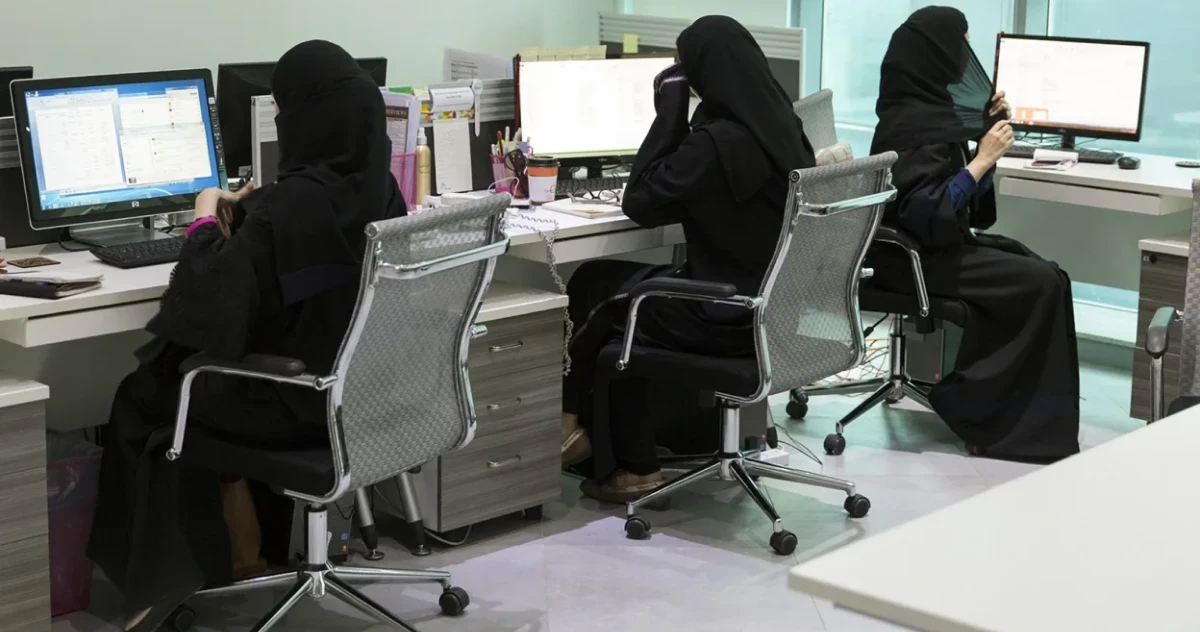
- The introduction of a 5% value-added tax (VAT) marked a significant fiscal shift, accompanied by a 127% increase in petrol prices, ending decades-long fuel subsidies.
- The lifting of the ban on women driving is a symbolic move toward gender equality.
(E.4) 2019: Economic Liberalization and Tourism Boost
- The Kingdom eased the 49% external ownership limit for strategic investors in listed companies.
- Saudi Arabia introduced e-visas for people from 49 nations, attracting over 500,000 tourists since September 2019.
- Aramco, the state-owned oil company, went public at a staggering $2 trillion valuation.
(E.5) Preparing for a Post-Oil Era: Renewable Energy and Economic Diversification
The notion that oil consumption will cease abruptly is unrealistic, but Saudi Arabia is proactively preparing for a future beyond oil. Key strategies include the following-
- Solar Energy Investments: With abundant sunlight year-round, Saudi Arabia is heavily investing in solar energy to meet local energy demands and potentially export excess energy globally.
- Diversification Efforts: Beyond renewables, Saudi Arabia is diversifying its economy through tourism, the Public Investment Fund (PIF), and major projects like NEOM and the Red Sea Islands, aligning with the goals of Vision 2030.
In a nutshell, Vision 2030 represents a comprehensive effort to reshape Saudi Arabia’s economic landscape, steering it away from oil dependency and toward a more diversified, sustainable future.
Note: We have explained this part in detail here- “Can Saudi Arabia Compete With the US & China In Global Economy?” Go through it for detailed information.
(F) Final Thoughts: Can Saudi Arabia survive without oil?
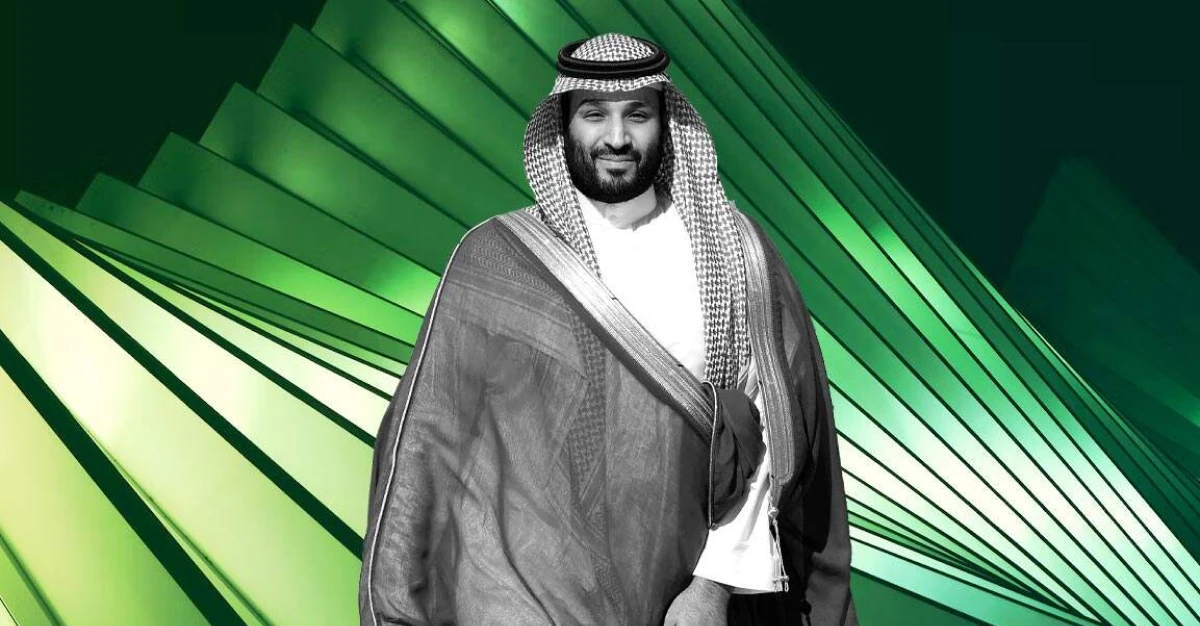
The question of whether Saudi Arabia can survive without oil is complex and multifaceted. Historically, oil has been the lifeblood of the Saudi economy, contributing significantly to government revenues, export earnings, and GDP.
However, the Vision 2030 initiative signals a strategic shift, aiming to diversify the economy away from oil dependence. While the plan includes investments in renewable energy, tourism, and mega-projects, the journey toward economic diversification poses challenges.
Saudi Arabia’s vast oil reserves have long fueled its prosperity, making any transition away from this finite resource challenging.
The country’s social and economic structures are deeply intertwined with oil revenues, and the monarchy’s power and societal stability hinge on these funds.
The ambitious plans to attract foreign investment, develop non-oil sectors, and embrace technological advancements signal a commitment to change. Yet, the timeline for achieving a sustainable post-oil economy remains uncertain.
Surviving without oil requires successfully navigating economic diversification, mitigating potential socio-political shifts, and adapting to a global energy landscape. The success of Vision 2030 will determine whether Saudi Arabia can not only endure but thrive in a future less reliant on its black gold!

